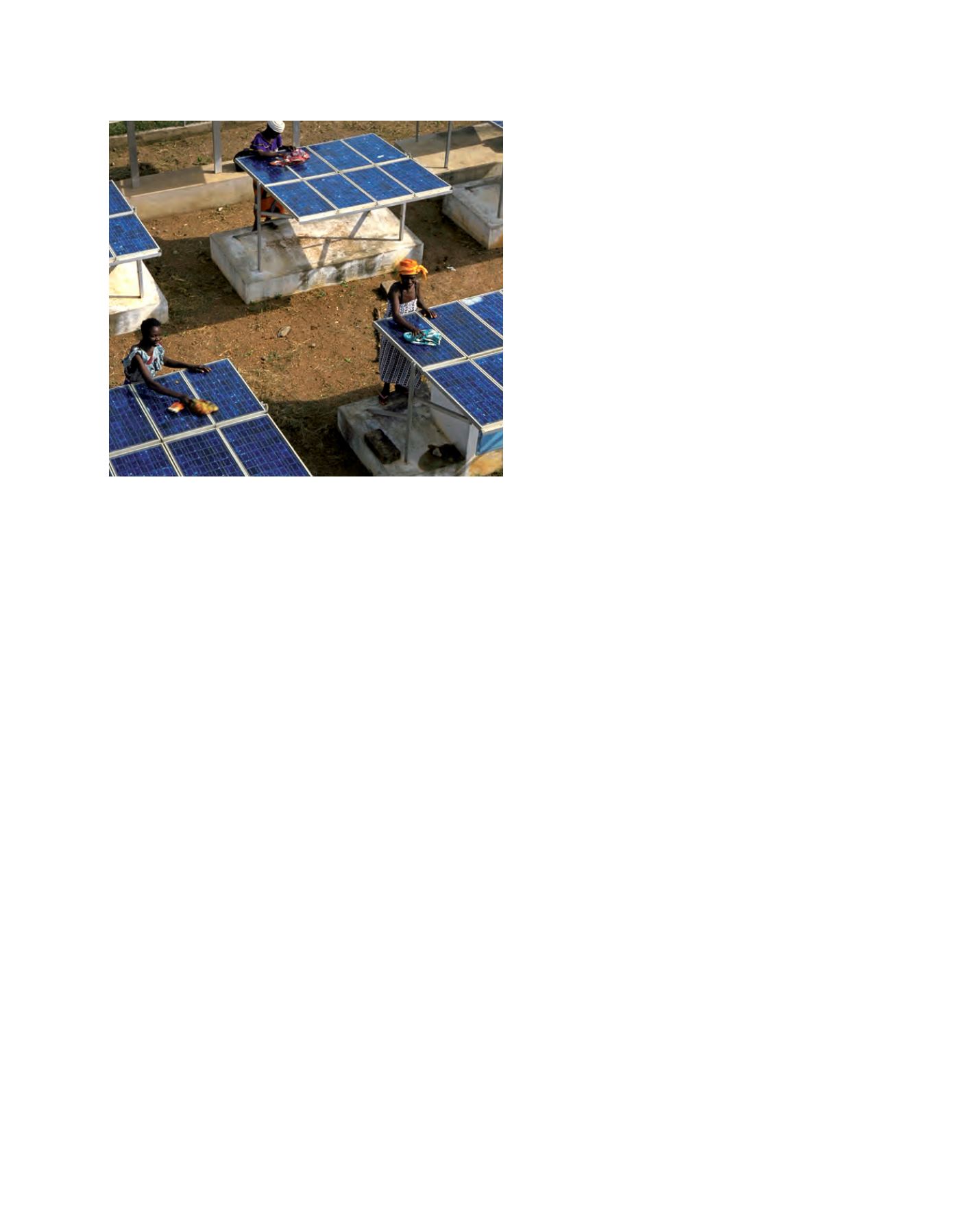

[
] 258
A
dAptAtion
And
M
itigAtion
S
trAtegieS
rather than to get the best possible information from the
climatic point of view. Hydropower production forecast-
ing on an annual time-scale is, for example, a key element
of the French electricity management system. Current
practices, based on the use of historical data, could be
easily improved using climate forecasts and downscaling
methods, by simply discriminating between dry/normal/
wet periods a few weeks or months in advance. Moreover,
long range forecasts are often more accurate in tropical
areas, and could therefore be profitably used in develop-
ing countries to forecast water resource, in particular, as
is already the case in western Africa
7
and South America.
8
This could help such countries to better manage their
water resources and their electricity production.
A second major issue is the use of probabilistic infor-
mation, and its communication to end users. Ensemble
(probabilistic) forecasts are particularly well suited to
answer risk management needs. But end users do not
generally feel comfortable using probabilistic weather and
climate forecasts, whereas products and services already
exist that may answer current identified needs with little
adaptation. With this in mind, National Meteorological
and Hydrological Services (NMHSs) have, over the last few
years, developed alert systems (for example, in Europe,
Meteoalarm and Carte de Vigilance from Météo-France).
According to the prevention principle these services gener-
ally issue more false alarms than was previously the case,
which could be seen as a drawback. But early warnings of
severe weather risks allow a quicker reaction andmore effi-
cient organization of emergency units, for example. They
also enable better communication with national or local
authorities, reducing the exposure of people and goods
to hazards, and hence the consequences of the event, as
taking preventive measures is generally cheaper than treat-
ing problems, even if events finally do not occur. Over
the next few years special emphasis should therefore be
placed on the importance of communication. In particular,
emphasis should be placed on fostering communication
of uncertainties and discussions between NMHSs and
end users. Different kinds of decision can be taken and
different levels of reaction can be activated, depending
on the forecasted event itself, but also on the uncertainty
associated with the forecast. This could notably drive
adaptations in the decision processes schemes for differ-
ent sectors, cross-sectors and authorities.
Adaptation to climate change and mitigation strategies
is likely to prompt the development of renewable energy
sources, such as electricity production, over the coming
decades. This reveals two additional and important needs:
the first one concerns the availability of weather and
climate data and forecasts that are not currently produced
and proposed routinely by NMHSs (for example, wind
speed at wind turbines’ hub height – around 100 metres).
This problem could be easily overcome with an increased
dialogue between providers and users. The second need
concerns climate projections for the next 30 years, which
corresponds to the lifetime of renewable productionmeans,
in order to build the best business plans and guide the best
investment decisions. Current projects on decadal predic-
end of the century, towards which the cooling systems are to be
dimensioned. Where the climate change impacts on a given param-
eter are not yet reliably known, a minimal value – taking present
climate change impact knowledge into account – is assumed, and
actions are planned correspondingly in order to allow future adapta-
tion measures during the running life of the installation.
Temperature increase is now included in the long-term electricity
consumption forecasts. Moreover, research is conducted in order to
evaluate and maximize the use of medium to long-term forecasts.
Real and future energy needs using climate information services
The energy sector is probably one of the most important users of
weather, water and climate data and forecasts. However, there are still
many gaps to fill in order to better manage energy production and
distribution systems in developed countries, and to build efficient and
sustainable systems in developing countries.
5
One major issue is the
development and improvement of forecasting systems at lead times
from two weeks to one or several years – the so-called ‘seamless predic-
tion systems’.
6
Monthly, seasonal and decadal climate predictions go a
good way to answer some of the needs, but there are still many chal-
lenges to face. These forecasting systems need to be notably improved
in order to be able to deliver reliable information to the users. Even
if climate predictability is low over mid-latitudes, current prediction
systems show positive scores for some variables, seasons and types
of events. These performances may be superior to the current energy
sector’s practices and closer collaborations between users and providers
are the only way to identify possible improvements in the electricity
sector applications and decision tools. They may also guide model
development in a positive way. In particular, special attention should
be paid to both the adaptation of such forecasts to the users’ needs – for
example using downscaling methods which allow the transformation of
large scale models outputs to local users’ needs for application models
– and on the consistency of the information delivered at different time-
scales. The problem here is getting the suitable information adapted
to the decision processes, which differ according to the time horizon,
Villagers and solar panels in Towé & Houéddo badgi (Benin)
Image: EDF Mediatheque/Riffet Daniel
















